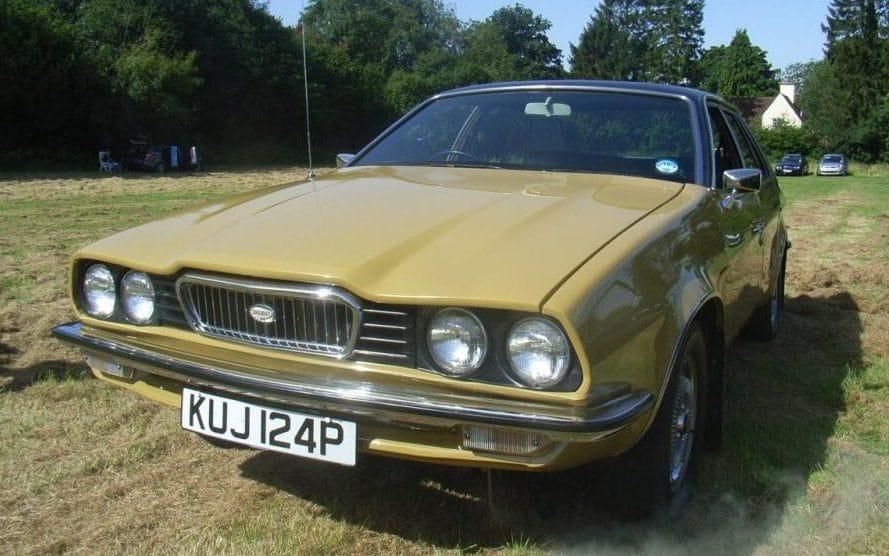In March of 1975, British Leyland replaced the 1800/2200 ‘Landcrab’ with the Harris Mann-styled 18-22 – the vehicle that would come to be known as the ‘Wedge’. Patrick Allen-voiced commercials heralded “A car of today” that would be “new tomorrow and the day after”.
The Morris and Austin versions were for the fleet buyer who might have otherwise considered the Ford Consul 2000, while for the sort of go-ahead executive who wore an LED digital watch there was the Wolseley.
The Wedge flagship was unofficially known as the 2200 but John Worth, the owner of one of only four examples believed to be still on the road, remarks: “There was no need to give the new Wolseley a model name. The brand name said all that needed to be said.”
Motor Sport thought it “the finest car to come out of British Leyland since the XJ6” and one that “the British motor industry should be proud of”. The Wolseley’s profile was further enhanced when HM Government commissioned a fleet as ministerial transport.
Unfortunately, “the biggest news since the Mini” made its bow when the company’s fortunes had reached their nadir; Worth highlights the unconscious irony of another Leyland slogan, “The car that has got it all together”. As he observes: “The new Wolseley turned out to be a product that was less cohesive than the marketing strap-line suggested. It fell apart all too quickly.”
By September 1975 the range was re-launched, with BL abandoning the three individual marque identities in favour of the Austin Princess badge – a development that saw the demise of the Wolseley name.
By the time the Austin Ambassador succeeded the Princess in 1982 the Wolseley was already an unusual sight, and Worth came by his car after reading a 2006 article in, naturally, The Daily Telegraph.
Worth finds the most frequent reaction to the ‘Harvest Gold’ Wedge is one of surprise. “Perhaps the looks; perhaps the fact that it still exists – the car was never known for its longevity. Perhaps the fact that someone is actually driving it.”
He also finds that “the young think it is ‘cool’. They have never seen anything like it before, all slanting panels and angles”.
Somewhat inevitably, he also encounters those who are keen to share their negative opinions, plus those older drivers who warmly associate the Wolseley with “achieving a promotion to area manager and the associated upgrade from a Morris Marina”.
For £2,999 you gained power-assisted steering, tinted glass, a radio, a multi-adjustable driver’s seat and even two cigar lighters. To further reflect the owner’s new-found status, the velour-trimmed cabin resembled the living room of George and Mildred and the roof was clad in the finest vinyl available to humanity.
Unlike its Austin and Morris stablemates, the Wolseley was only available with the 2,227cc six-cylinder OHC engine, as fitting “the car that’s got it all together in performance”.
In reality, it was perhaps best suited to the optional automatic transmission, but this is not to imply that Wedge motoring is devoid of excitement. Worth reports that his car “has an air of fragility, just as it did when new and it left the factory.
“Driving is to be tailored accordingly. Avoid the potholes, for fear that something might drop off. Avoid over-revving the engine, for fear of dropping a valve.”
Forty-four years ago, such concerns often resulted in potential buyers opting for their first Volvo, but Worth’s car marked a bold step for one of the most respected names in British automotive history. The illuminated ‘ghost light’ badge had long denoted taste, decency and owners writing stern letters to the local paper denouncing the activities of Teddy Boy gangs.
Even in the mid-1970s many Britons still associated the marque with CID inspectors, clanging bells and Edgar Lustgarten intoning “it was here the villain made his fatal error” in a Scotland Yard film.
The 18-22 had the genuine potential to re-invent Wolseley’s image for a new generation of ‘professional class’ drivers – who could bask in the social prestige derived from a car with “ruched door pockets”.
For tips and advice, visit our Advice section, or sign up to our newsletter here
To talk all things motoring with the Telegraph Cars team join the Telegraph Motoring Club Facebook group here
More classic car stories at Telegraph Cars




